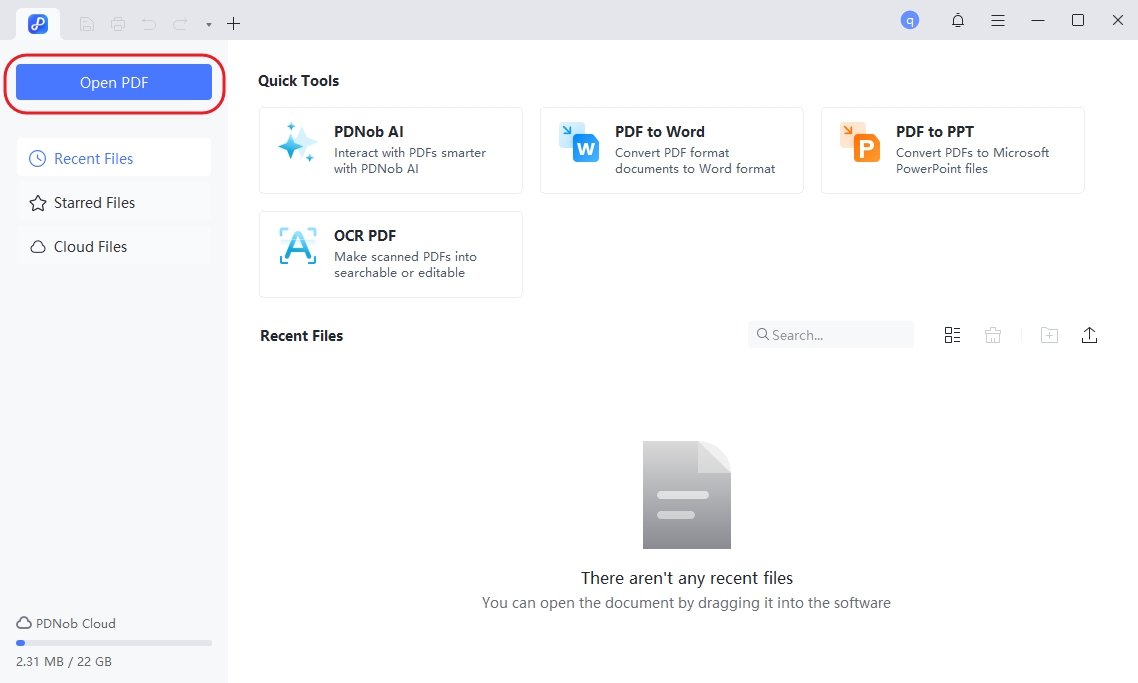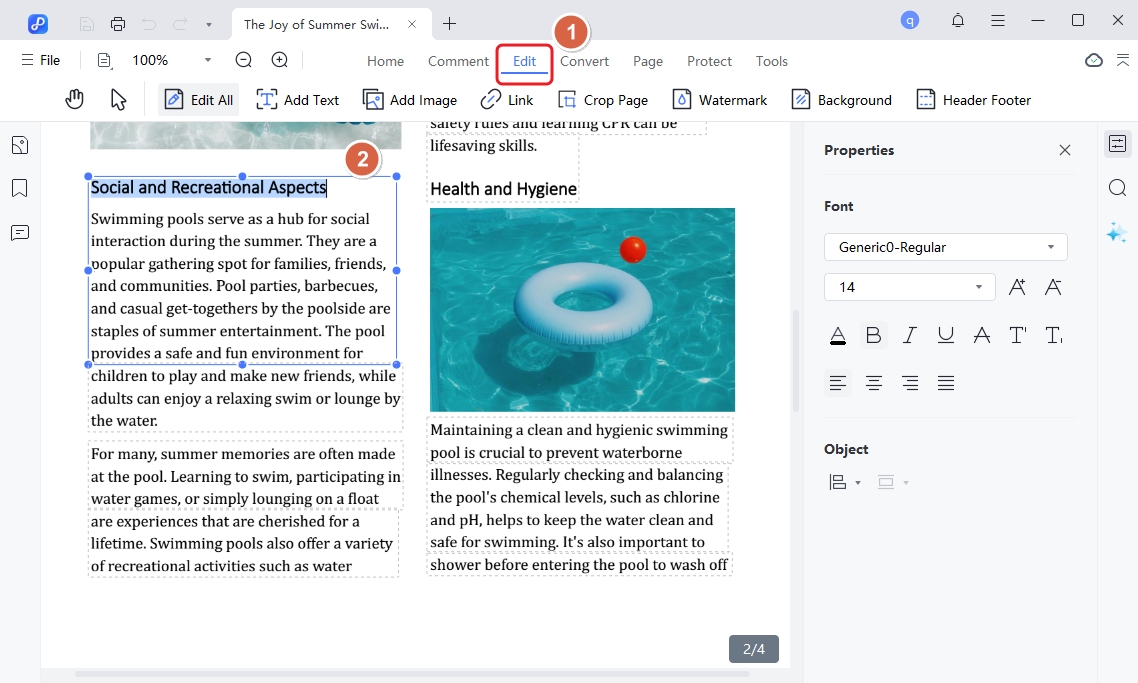The Ultimate All-in-One PDF Editor
Edit, OCR, and Work Smarter.
The Ultimate All-in-One PDF Editor
Edit, OCR, and Work Smarter.
Optical Character Recognition (OCR) has evolved from simple text extraction to intelligent AI OCR systems capable of understanding complex document layouts. olmOCR, developed by the Allen Institute for AI (AI2), is a cutting-edge vision-language OCR model that reads, interprets, and extracts text with semantic understanding.
Whether you are a researcher, developer, or business user, understanding how to use olmOCR and its capabilities can significantly improve automated document processing workflows. This article provides a complete overview, including GitHub resources, Docker deployment, Python API usage, and practical alternatives for everyday users.
olmOCR (Open Language Model for OCR) is a state-of-the-art AI OCR system combining vision-language models and layout-aware parsing. Unlike traditional OCR tools such as Tesseract, olmOCR can:

By integrating semantic understanding with layout parsing, olmOCR enables researchers and developers to extract information from complex PDFs, including academic papers, financial reports, and legal documents.
olmOCR is designed for developers, researchers, and tech enthusiasts. It provides multiple deployment options, including GitHub cloning, Python API, Docker containers, and Hugging Face models. Here’s a step-by-step guide to using olmOCR effectively.
git clone https://github.com/allenai/olmocr.git
cd olmocrKeyword: olmocr github. Make sure Git is installed on your system (Windows/macOS/Linux).
pip install -r requirements.txtThis installs Python packages such as PyTorch, Transformers, and OpenCV required for running olmOCR.
python -m olmocr.download_model --model baseBase model is suitable for quick testing; Large model is recommended for high-accuracy OCR.
python -m olmocr.run --input sample.pdf --output result.jsonOutput: result.json contains extracted text and layout information.
olmOCR provides Python API for integrating OCR into your workflows:
from olmocr import OCRModel
# Load the pre-trained model
model = OCRModel.load("allenai/olmocr-base")
# Recognize text in a PDF
result = model.recognize("invoice.pdf")
# Access text and layout
print(result.text)
print(result.layout)Supports PDFs, PNGs, JPEGs. Outputs structured JSON.
import os
from olmocr import OCRModel
model = OCRModel.load("allenai/olmocr-base")
input_dir = "pdf_folder/"
output_dir = "ocr_results/"
for file in os.listdir(input_dir):
if file.endswith(".pdf"):
pdf_path = os.path.join(input_dir, file)
result = model.recognize(pdf_path)
output_path = os.path.join(output_dir, file.replace(".pdf", ".json"))
result.save_json(output_path)Ideal for processing multiple academic papers, invoices, or reports.
docker pull allenai/olmocrdocker run -v $(pwd):/data allenai/olmocr \
--input /data/sample.pdf \
--output /data/result.jsonOutput result.json is saved locally. Keyword: olmocr docker.
for f in ./pdf_folder/*.pdf; do
docker run -v $(pwd):/data allenai/olmocr --input /data/$f --output /data/out_$f.json
donefrom transformers import AutoProcessor, AutoModelForSeq2SeqLM
from PIL import Image
processor = AutoProcessor.from_pretrained("allenai/olmocr-base")
model = AutoModelForSeq2SeqLM.from_pretrained("allenai/olmocr-base")
image = Image.open("scan.png")
inputs = processor(images=image, return_tensors="pt")
outputs = model.generate(**inputs)
text = processor.batch_decode(outputs, skip_special_tokens=True)
print(text)Following these steps, developers can deploy olmOCR locally, on servers, or in the cloud, achieving high-accuracy OCR for academic research, enterprise workflows, or custom development pipelines.
For non-developers who want a simple PDF OCR solution, check out Tenorshare PDNob, which delivers fast, accurate, and user-friendly OCR without requiring coding skills.


PDNob PDF Editor Software- Smarter, Faster, Easier
To help users quickly understand olmOCR’s advantages, here’s a clear comparison with other popular OCR tools. The focus is on accuracy, speed, batch processing, and integration.
olmOCR 2 brings faster performance, higher accuracy, and better integration, addressing the needs of developers, researchers, and businesses.
olmOCR is an excellent AI OCR tool for developers and researchers who are comfortable with Python, Docker, or Hugging Face. It excels at extracting text from complex scanned documents and academic papers. However, for many everyday users—students, professionals, and businesses—setting up and managing olmOCR can be challenging.
This is where Tenorshare PDNob stands out as a practical, user-friendly alternative. Unlike olmOCR, PDNob PDF Editor combines advanced AI OCR with a full-featured PDF editor, letting you edit, annotate, convert, and secure your PDFs all in one place. Users don’t need any programming knowledge—just open the file, run OCR, and start editing.



Yes. olmOCR can create searchable PDFs, extract plain text, or export structured JSON. However, it does not include a built-in PDF editor, so further editing requires additional software like PDNob PDF Editor.
Printed text: 98–99% accuracy
Handwriting: 85–90% accuracy
Multi-column or complex layouts: reliable extraction
Accuracy may vary depending on scan quality and language.
olmOCR is primarily developer-focused, requiring Python or Docker setup. For non-technical users, GUI-based alternatives like PDNob PDF Editor AI OCR allow easy OCR processing, PDF editing, and batch conversion without coding.
Yes. olmOCR 2 supports multiple languages and character sets, including English, Chinese, Spanish, and more. Users can integrate custom models for additional languages via Hugging Face.
Input formats: PDF, PNG, JPEG, TIFF.
Output formats: searchable PDF, plain text, and structured JSON. This makes it useful for research, business documents, and academic papers.
Currently, olmOCR runs locally via Python or Docker. Online testing is available via Hugging Face demos, but bulk document processing is best handled locally.
olmOCR excels in accuracy and flexibility for developers but lacks GUI and built-in editing. Tools like PDNob PDF Editor AI OCR combine advanced AI OCR with user-friendly PDF editing, batch processing, and export options, making them ideal for professionals or students.
olmOCR is open-source and available on GitHub (olmOCR GitHub) and Hugging Face (olmOCR Hugging Face), including Docker images and Python APIs for integration.
olmOCR 2 is a powerful AI OCR tool for developers and researchers, offering high accuracy for printed and handwritten text. For non-technical users or those needing a complete PDF solution, PDNob PDF Editor provides an easy-to-use alternative with advanced OCR, full PDF editing, batch processing, and flexible output options.


PDNob PDF Editor Software- Smarter, Faster, Easier
 The END
The END
I am PDNob.
Swift editing, efficiency first.
Make every second yours: Tackle any PDF task with ease.
As Leonardo da Vinci said, "Simplicity is the ultimate sophistication." That's why we built PDNob.
then write your review
Leave a Comment
Create your review for Tenorshare articles
By Jenefey Aaron
2025-12-19 / OCR